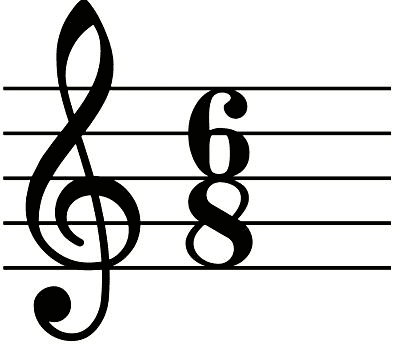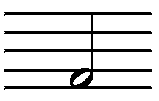Structural markings/symbols/signs define and change the structures of music that they are applied to. These signs can mean that you have to repeat certain sections, or go to a different part in the music, rather than the one which follows from the next bar, etc.
The signs below are a form of repeating bars. All bars, whether it be few or many, that are encompassed by the markings which sit on the bar lines, have to be repeated round one time, immediately after you have reached the end repeat sign, which is one vertical thick line, with another thinner line to it's left, and then two dots to that left that line, the repeat starting from the other similar beginning repeat sign, also sitting on the bar line, which is one thick vertical line, with another thinner line to its right, and another two dots to the right of that.

After you have repeated round and reach the end repeat mark for the second time, you then simply carry on in the music from the next bar following after that end repeat mark. This is unless you have the marks included in the music below, where there are added caps over the bars with numbers written on them, one cap over however many bars just before the end repeat sign and the second cap over however many bars just after the end repeat sign. With these signs, it just means that you play whatever is in the first cap in the first time you play through that repeated section, and play whatever is in the second cap the second time you play through the section, when you repeat round it, instead of playing what is in the first cap, missing those bars out entirely, and then of course, carrying on playing with the next bars that follow after that.

This next mark as another repeat sign. This mark, which looks like diagonal line with two dots next to it, goes in the middle of a bar, filling an entire bar, because it means to repeat the bar previous to it.

The mark above and the mark below are very similar as you can see. The first (above) is a one bar repeat mark, but the bar below is a two bar repeat mark. This mark again goes in the centre of a bar, filling an entire bar, and it means that you have to repeat the two bars previous to that sign, in the order those bars came in, before then continuing in the music, from the next bar onwards. This sign is similar to the one bar repeat sign, the difference being that there are two diagonal lines instead of one, as well as a vertical line going through the centre of the mark. There are more repeat signs like these two, the rule being that however many diagonal lines there are included in the sign, is the amount of bars previous to that sign, that you then repeat round once, following the original order of the bars, continuing on from the next bar after the repeat sign, after you have played the repeat, and all repeat signs that are two or more bars have the vertical line through the centre, unlike the one bar repeat sign. It is also quite common for the specific number of bars that a repeat sign like these dictates to repeat round, to be written above the repeat sign, above the stave.

The next signs direct you to jump to certain points in the music. D.S. which is an abbreviation of Dal Segno, means 'from the sign'. From the point at which you come across this marking, at the end of a bar, it directs you to then immediately return to a spot earlier in the score that is marked by the S symbol which has a diagonal line with two dots going through it. You play on from that S type sign, but if the first sign you come across says
D.S. al Coda, instead of D.S. then you still immediately return to play on from the S type sign, but then instead you will eventually come across a 'To Coda' marking, which means you then jump from where that marking is to a coda sign, which looks like a circle, with a horizontal line and vertical line going through it. From here, you then just play on through to the end of the music.

There is also another marking in relation to the ones above. This next sign is called
D.C. al coda, or
da capo al coda, literally meaning ''from the head (beginning) to the coda''. When you encounter this sign, which will be at the end of a bar, you immediately return to the beginning of the music, and play from the first bar onwards. Then, when you come across a 'To Coda' sign, like with the signs above, you skip from that point ahead in the music until you reach a Coda sign. You continue playing from the Coda sign through to the end of the music.
There is a particular sign which marks the end of the music, on the bar line of the last bar. It is what's called a double bar line, which is simply two vertical bar lines next to each other, the very last bar line being thicker then the rest throughout the music.

You can also encounter letters in music, written above the stave. They are always capital letters, and usually appear in boxes. These are structural markings, the points at which they are placed in the music separating it up into it's different sections/parts, like verses and choruses for example. These structural markings are usually found and used in music for group ensembles, and conducting/leading purposes.















.png)





























